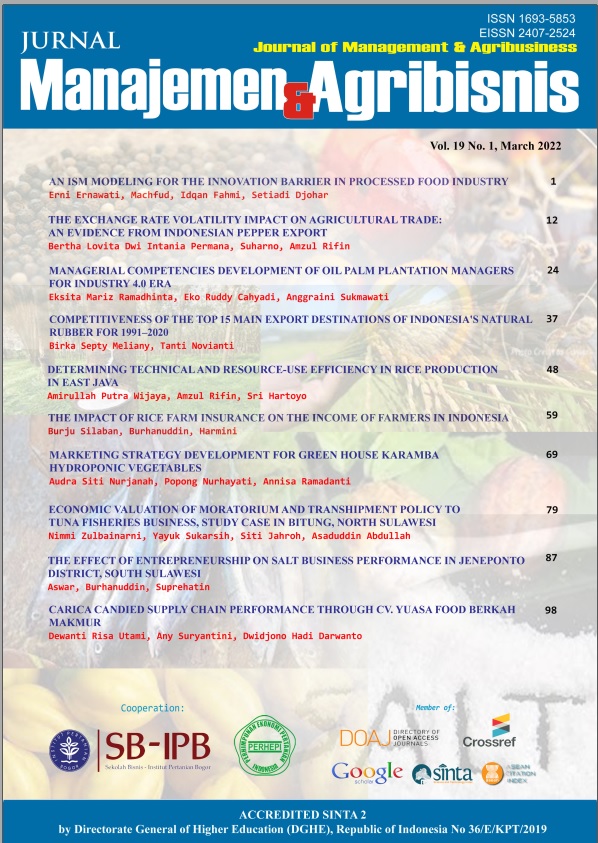Business Development Strategy for Chocolate Rangginang Products at Kang Asrok’s Micro Small Business in Banjar City West Java Province
Abstract
Kang Asrok is a small micro-business engaged in the food processing industry, namely rangicok, which uses rangginang as a basic ingredient that is innovated with various flavors to become today's food that maintains the existence of traditional food. This study aims to analyze internal and external environmental factors: weaknesses, strengths, threats, and opportunities, formulate strategic alternatives and formulate business strategy priorities that can be a recommendation for Kang Asrok. This study uses primary data from the questionnaire of 3 experts, observation and interview with the owner, and an online survey of 20 respondents. This study uses a three-stage analysis consisting of the input stage, the matching stage, and the decision stage. This study was conducted using analysis tools such as the SWOT matrix, IFE, and EFE matrix, IE matrix, and QSP matrix. The results showed that Kang Asrok was in quadrant IV, which means the right strategy is growth and build. Based on the QSP matrix, the right strategy to be applied is market penetration to create brand awareness of the community towards the product got a STAS score of 5,30.
Keywords: processing industry, QSPM, traditional food, SWOT
Authors
Authors who publish with this journal agree to the following terms:
- Authors retain copyright and grant the journal right of first publication with the work simultaneously licensed under a Creative Commons Attribution License that allows others to share the work with an acknowledgement of the work's authorship and initial publication in this journal.
- Authors are able to enter into separate, additional contractual arrangements for the non-exclusive distribution of the journal's published version of the work (e.g., post it to an institutional repository or publish it in a book), with an acknowledgement of its initial publication in this journal.
- Authors are permitted and encouraged to post their work online (e.g., in institutional repositories or on their website) prior to and during the submission process, as it can lead to productive exchanges, as well as earlier and greater citation of published work (See The Effect of Open Access).

